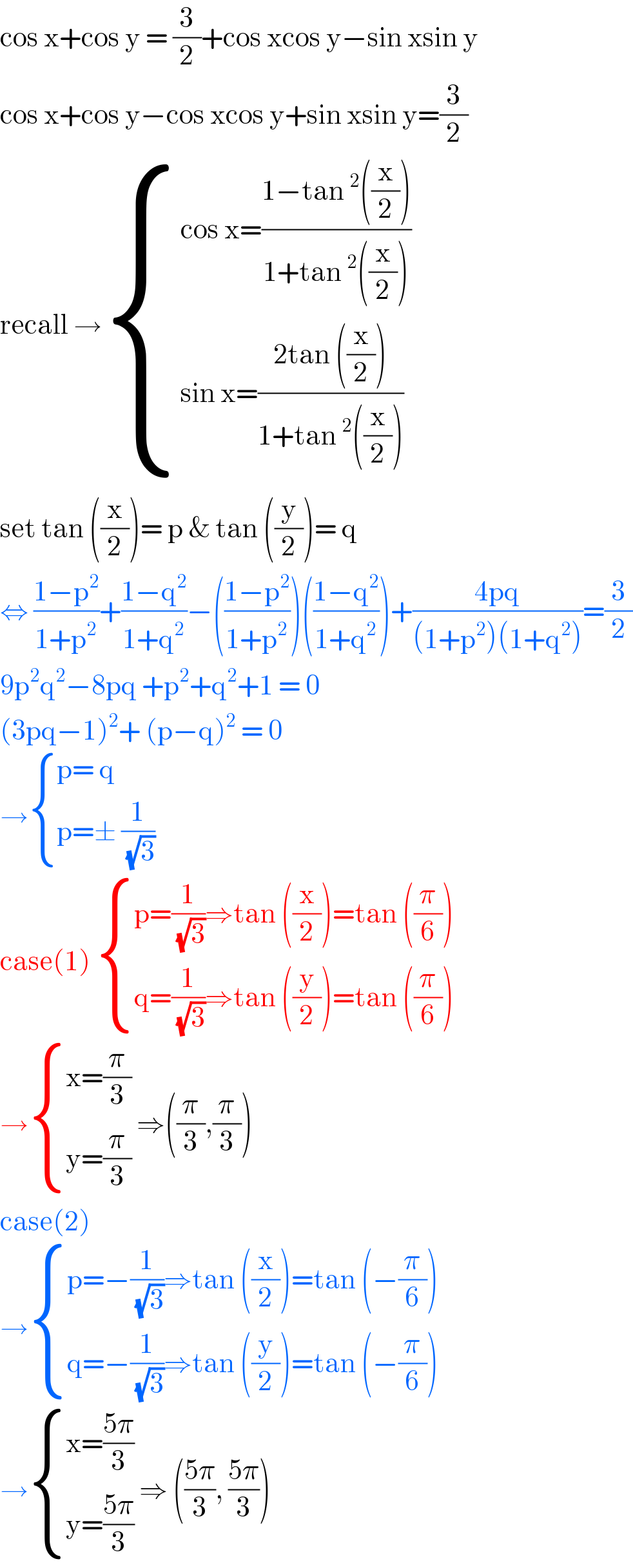
Question and Answers Forum
Question Number 106579 by john santu last updated on 06/Aug/20
![Given cos x+cos y=(3/2)+cos (x+y) where x,y ∈ [0,2π ]. find x & y](Q106579.png)
Answered by bobhans last updated on 06/Aug/20

Commented byjohn santu last updated on 06/Aug/20

| ||
Question and Answers Forum | ||
Question Number 106579 by john santu last updated on 06/Aug/20 | ||
![Given cos x+cos y=(3/2)+cos (x+y) where x,y ∈ [0,2π ]. find x & y](Q106579.png) | ||
Answered by bobhans last updated on 06/Aug/20 | ||
 | ||
| ||
Commented byjohn santu last updated on 06/Aug/20 | ||
 | ||